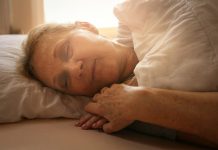
People who have had a stroke, and the doctors who treat them, have a lot to be concerned about:
Regaining mobility and function, controlling risk factors for a second stroke, guarding against depression that can result from a newly limited life.
There’s another potential consequence not on everyone’s list: osteoporosis.
“We don’t know as much about osteoporosis and stroke as we should,” said Dr. Mark Goldberg, a neurologist at the Peter O’Donnell Brain Institute in Dallas and professor at the UT Southwestern School of Medicine.
“As stroke doctors, this is something we should be paying more attention to.”
Osteoporosis is a progressive disease, more often in women, in which bones become porous and fragile, increasing the risk of fractures.
A stroke occurs when blood supply to part of the brain is blocked by a clot or a rupture, killing brain cells and impairing body function, even causing paralysis on one side of the body.
The two maladies are intertwined, and not in a good way.
Studies indicate stroke survivors who lose some of their balance and mobility are more likely to fall, and those with osteoporosis have a greater danger of breaking bones.
A Canadian study, for example, concluded stroke patients were 47% more likely than people without a history of stroke to suffer a fracture, a particularly perilous consequence for older people.
“Even if it’s just a small fall, they’re just much more likely to break their hip or shoulder,” Goldberg said. “This is a significant cause of disability.”
Becoming sedentary can make osteoporosis worse.
Physical activity is a key factor in maintaining healthy bones, Goldberg said, “and by not moving around, people are likely to lose bone mass. So, after a stroke you’re (more likely to develop) osteoporosis.”
Despite that, other post-stroke problems seem to take priority.
“When people come for follow-up, they’re asked about blood pressure or heart issues,” said Dr. Angela Cheung, an internal medicine specialist and founding director of University Health Network Osteoporosis Program in Toronto.
“Bone health is really on the bottom of the list.”
Cheung co-authored a study of more than 16,000 stroke survivors in Canada over 65, examining whether they were screened or treated for osteoporosis in the first year after the stroke.
The results, published earlier this year in the journal Stroke, showed only 5.1% had bone mineral density testing. About 15% were prescribed medication for osteoporosis.
Cheung said the study highlights the need for making osteoporosis assessment standard after a stroke.
“At the least we need to ask, have you fallen, and have you had a fracture, and then incorporate this in our follow-up care,” she said. “This needs to be on everyone’s radar.”
Goldberg agreed. “People who have had a stroke have a lot of problems that need attention,” he said. “All of a sudden you’re in a different world, and patients and their families are often overwhelmed.”
According to research, about one in five people who have a stroke will have another one within five years.
Neurologists, Goldberg said, tend to be focused on preventing a second stroke by controlling such risk factors as high blood pressure, diabetes, high cholesterol and an irregular heartbeat.
“This may be part of the reason that the osteoporosis facet of care hasn’t received enough attention,” he said. “But there are good ways to screen for it, and treatments for people at risk.”
Stroke and osteoporosis have another thing in common: an excellent reason to avoid cigarettes.
“Smoking is a risk factor for osteoporosis and for stroke,” he said. “So that’s a double whammy.”



